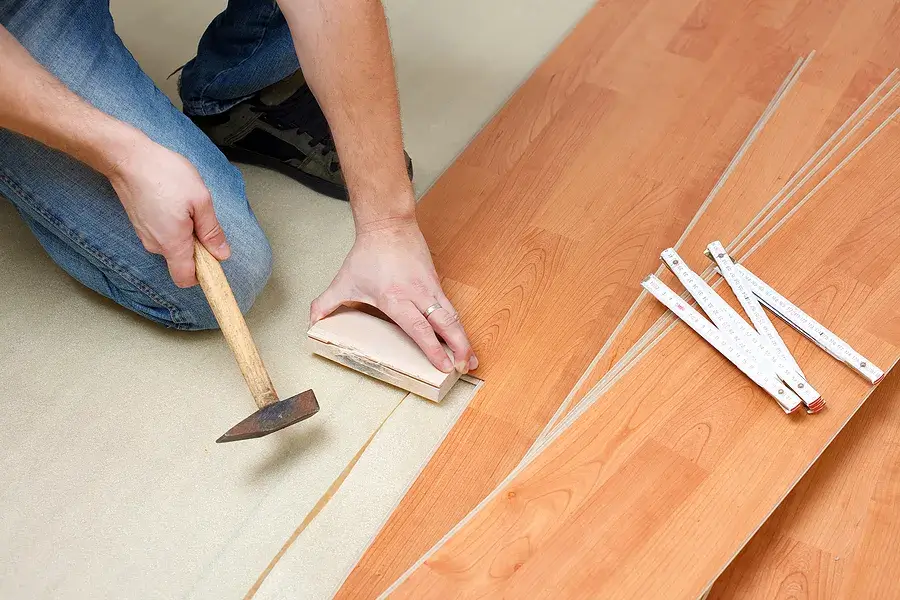The best flooring for your money depends on your budget, preferences, and needs. However, some of the most popular and cost-effective options are vinyl, laminate, and engineered hardwood. These flooring types offer durability, versatility, and style at a reasonable price. In this article, we will compare these three flooring options and help you decide which one is best for your home.
Vinyl Flooring
Vinyl flooring is a synthetic material that mimics the look and feel of natural materials such as wood, stone, or tile. Vinyl flooring comes in various forms, such as planks, tiles, or sheets. Vinyl flooring is easy to install, maintain, and clean. It is also water-resistant, stain-resistant, and scratch-resistant, making it ideal for high-traffic and moist areas such as kitchens, bathrooms, and basements. Vinyl flooring is also comfortable and quiet underfoot, as it has a cushioned layer that absorbs sound and impact.
Vinyl flooring is one of the most affordable flooring options, as it costs between $2 and $12 per square foot, depending on the quality and design. However, vinyl flooring also has some drawbacks, such as fading, denting, and curling over time. Vinyl flooring is also not very eco-friendly, as it is made from petroleum and emits volatile organic compounds (VOCs) that can affect indoor air quality. Vinyl flooring is also not very suitable for areas with direct sunlight or extreme temperatures, as it can warp or crack.
Laminate Flooring
Laminate flooring is another synthetic material that resembles natural materials such as wood, stone, or tile. Laminate flooring consists of four layers: a wear layer, a design layer, a core layer, and a backing layer. The wear layer protects the flooring from scratches, stains, and wear and tear. The design layer contains a high-resolution image of the desired material. The core layer provides stability and strength to the flooring. The backing layer prevents moisture and mold from damaging the flooring.
Laminate flooring is also easy to install, maintain, and clean. It is also durable, resistant to fading, and available in a wide range of colors, styles, and textures. Laminate flooring is also more affordable than natural materials, as it costs between $3 and $10 per square foot. However, laminate flooring also has some disadvantages, such as being susceptible to water damage, swelling, and warping. Laminate flooring is also not very comfortable or quiet underfoot, as it is hard and noisy. Laminate flooring is also not very eco-friendly, as it contains formaldehyde and other chemicals that can affect indoor air quality.
Engineered Hardwood Flooring
Engineered hardwood flooring is a hybrid material that combines a thin layer of real wood with a plywood or fiberboard base. Engineered hardwood flooring offers the beauty and warmth of natural wood, but with more stability and durability. Engineered hardwood flooring is less prone to shrinking, expanding, or warping due to changes in humidity and temperature. Engineered hardwood flooring is also easier to install than solid hardwood flooring, as it can be glued, nailed, or floated over the subfloor.
Engineered hardwood flooring is also easy to maintain and clean, as it only requires sweeping, vacuuming, and occasional damp mopping. It is also resistant to scratches, stains, and fading, as it has a protective finish. Engineered hardwood flooring is also more eco-friendly than solid hardwood flooring, as it uses less wood and produces less waste. Engineered hardwood flooring costs between $6 and $15 per square foot, depending on the quality and species of the wood. However, engineered hardwood flooring also has some drawbacks, such as being vulnerable to water damage, dents, and gouges. Engineered hardwood flooring is also not very suitable for areas with high moisture or humidity, such as bathrooms or basements. Engineered hardwood flooring is also not very easy to refinish, as it has a thin layer of wood that can wear out over time.
Conclusion
The best flooring for your money depends on your budget, preferences, and needs. However, some of the most popular and cost-effective options are vinyl, laminate, and engineered hardwood. These flooring types offer durability, versatility, and style at a reasonable price. However, they also have some drawbacks, such as being affected by water, temperature, or sunlight. Therefore, you should always consider the pros and cons of each flooring type before making a decision. You should also consult a professional flooring contractor or installer for advice and guidance.

